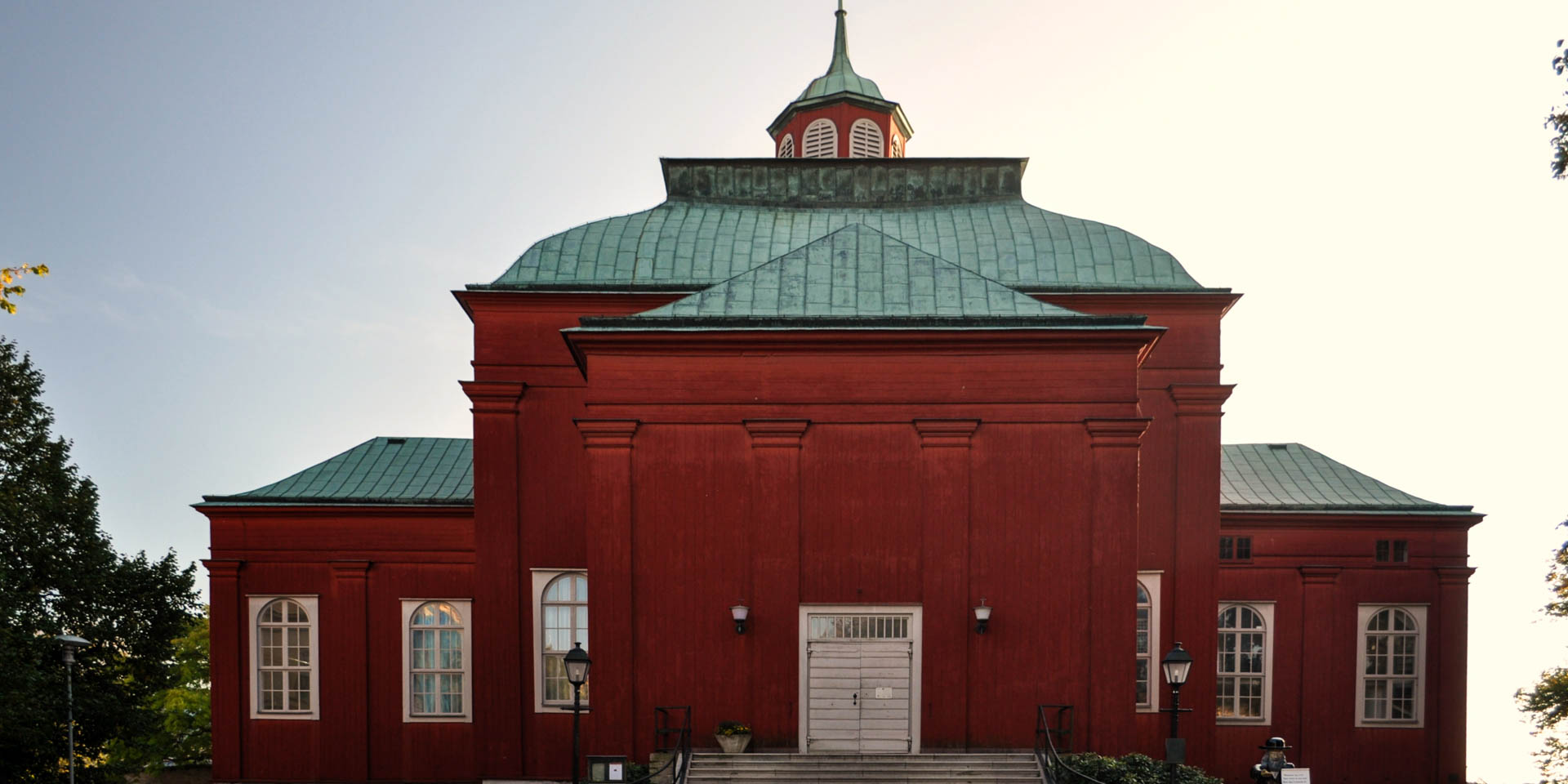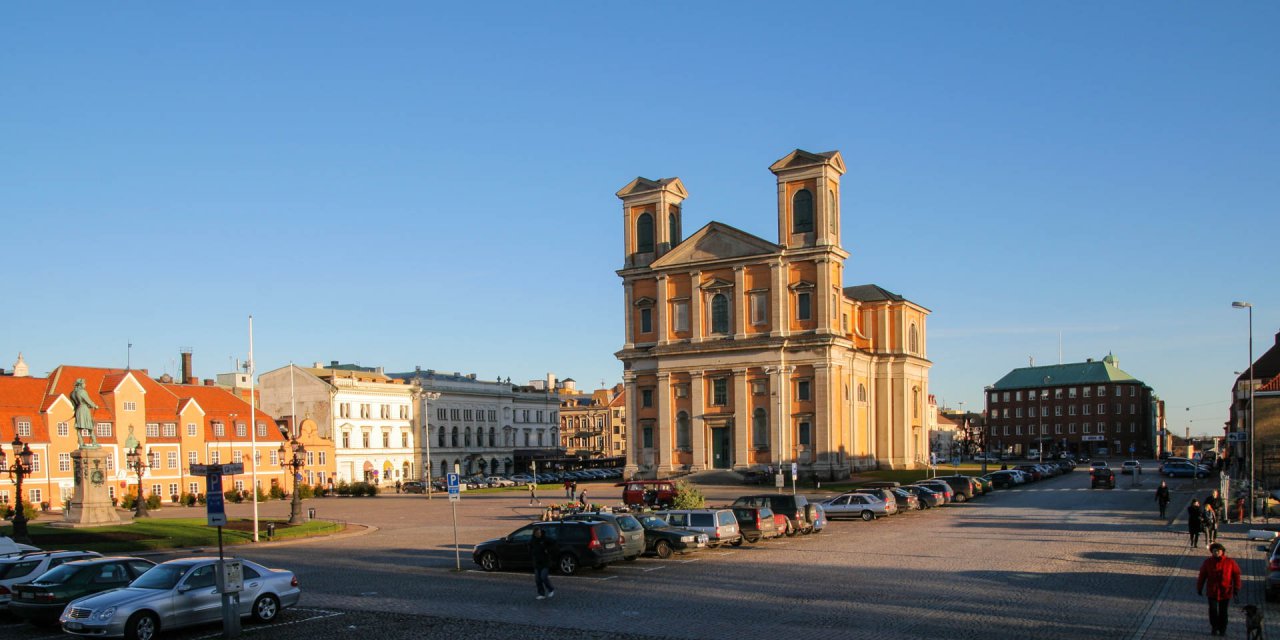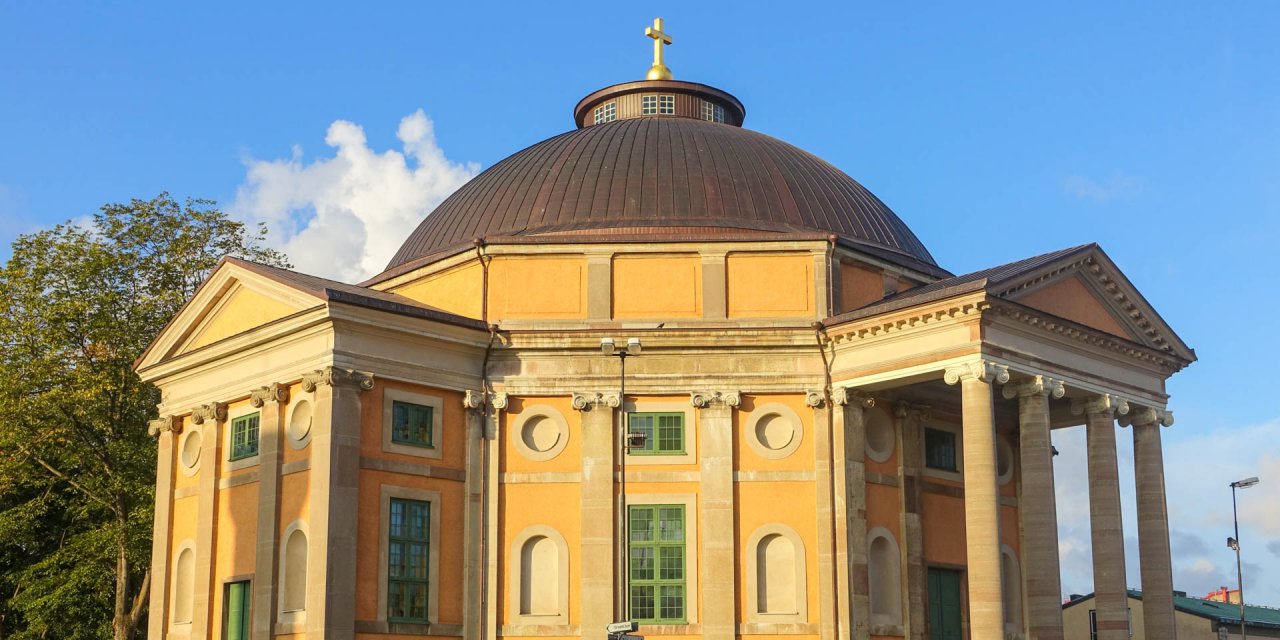

Amiralitetskyrkan Ulrica Pia
Admiralty Church in Karlskrona
The Admiralty Church Ulrica Pia in Karlskrona was consecrated in 1685. It is the largest wooden church in Sweden and is part of the UNESCO World Heritage Site since 1998. The church is located at the southeastern edge of the island Trossö, near the center of Karlskrona. The area was formerly part of the restricted area of the naval base.
The outline of the red-painted church is in the shape of a Greek cross. The cube-shaped main building in the center has a footprint of 20x20 meters. At all four sides are smaller, equally-sized cross arms.
The interior of the church is decorated mainly in allusion to the colors of the sea in shades of light blue and light green. The roof structure of the main building is supported by four massive wooden columns. In the southern and north transept bleachers are installed with an overlying straight wooden ceiling. The east wing is the chancel and is provided with a vaulted ceiling, while the organ is housed in the west wing in an arched niche.
The altarpiece in neo-classical style dates from the 1820s and the altar painting is a replica of Rubens painting The Coup de Lance, whose original hangs in the cathedral of Antwerp. The octagonal pulpit with canopy and gilded ornaments was added during the major restoration in 1864. On the walls of the church are many epitaphs of former prominent residents of the city, high-ranking military and nobleman. In the basement of the church are 23 grave chambers in which rest 283 deceased.
In front of church stands the famous wooden statue Rosenbom, an offertory box in form of an aged boatman. Outdoors is just a copy, the original from the mid-18th century is in the hall of the north wing of the church since 1956.
Amiralitetskyrkan Ulrica Pia: Opening hours
Opening hours
Monday – Friday: 10:00 – 18:00
Last update: 06/2022 | Errors and omissions excepted.
History
It is not quite sure who designed the church, but believed that Quartermaster General Erik Dahlberg, who was also responsible for a large part of urban planning, designed the church. What is certain is that this church was planned from the beginning to be temporary and was therefore built on the fly as a wooden church during the construction phase of the naval base, with the idea to replace it as soon as possible by a stone church.
It took almost a hundred years and endless discussions and drafts until the foundation of the new stone church was laid near the admiralty park in 1760. When after twenty years of construction the walls were just four meters high due to financial constraints, the building was canceled. The thought of the stone church flared up again and again, until the plan was finally buried and the unfinished building was demolitioned in 1850.
Since they could not afford a stone church, they painted the wooden church yellow and provided the outside with some accessories in Baroque style to approach the appearance of the two large Baroque churches on the Stortorget.
Restorations, minor alterations and modernization followed in the decades after. The Defense Office as the owner of the church decided in 1975 to change the appearance of the building to its original and to paint the church again in red. Despite the arguments of the conservation authority, the military government finally prevailed and Ulrica Pia shines original red since 1985.



